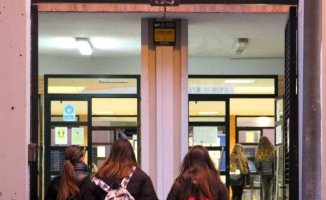As for most of his compatriots, Sunday was a happy day for photojournalist Lalo de Almeida (São Paulo, 1970). The return to the presidency of Lula da Silva and the departure of Bolsonaro make him hope that with him the regressive environmental policies that have accelerated the destruction of the Amazon rainforest and whose devastating effects not only have an impact on the ecosystem but also in the indigenous communities (350 groups) that inhabit it.
De Almeida landed on the ground for the first time in 2012, to cover the construction of the Belo Monte hydroelectric plant, on the Xingú River, and since then his camera has witnessed fire, deforestation, pollution of rivers by the illegal extraction of gold... And even worse: "The rooting of Bolsonaro's mentality in a large part of the indigenous population, which is isolated and has been manipulated through WhatsApp messages that were pure fake news," explains the photographer whose work on “the predatory model of the Amazon that began 500 years ago with colonization and that Bolsonaro has empowered,” earned the long-term project the latest World Press Photo.
A selection of images from Amazonian Dystopia, which is the title of De Almeida's project, can now be seen at the CCCB as part of the World Press Photo exhibition, organized by the Photographic Social Vision Foundation. The sample of the winning works offers an enormous diversity of authors and stories, from the forest fires that broke out on the island of Euboea after Greece reached the highest temperatures in the last 30 years (Konstantinos Tsakalidis) to the evocation of the abuses –and sometimes the death– of the 150,000 children who were taken to indigenous residential schools as part of a policy to integrate indigenous ethnic groups into Western culture (Amber Bracken).













